Home>Storage Ideas>Kitchen Storage>16 Things You Never Knew You Could Clean In Your Dishwasher
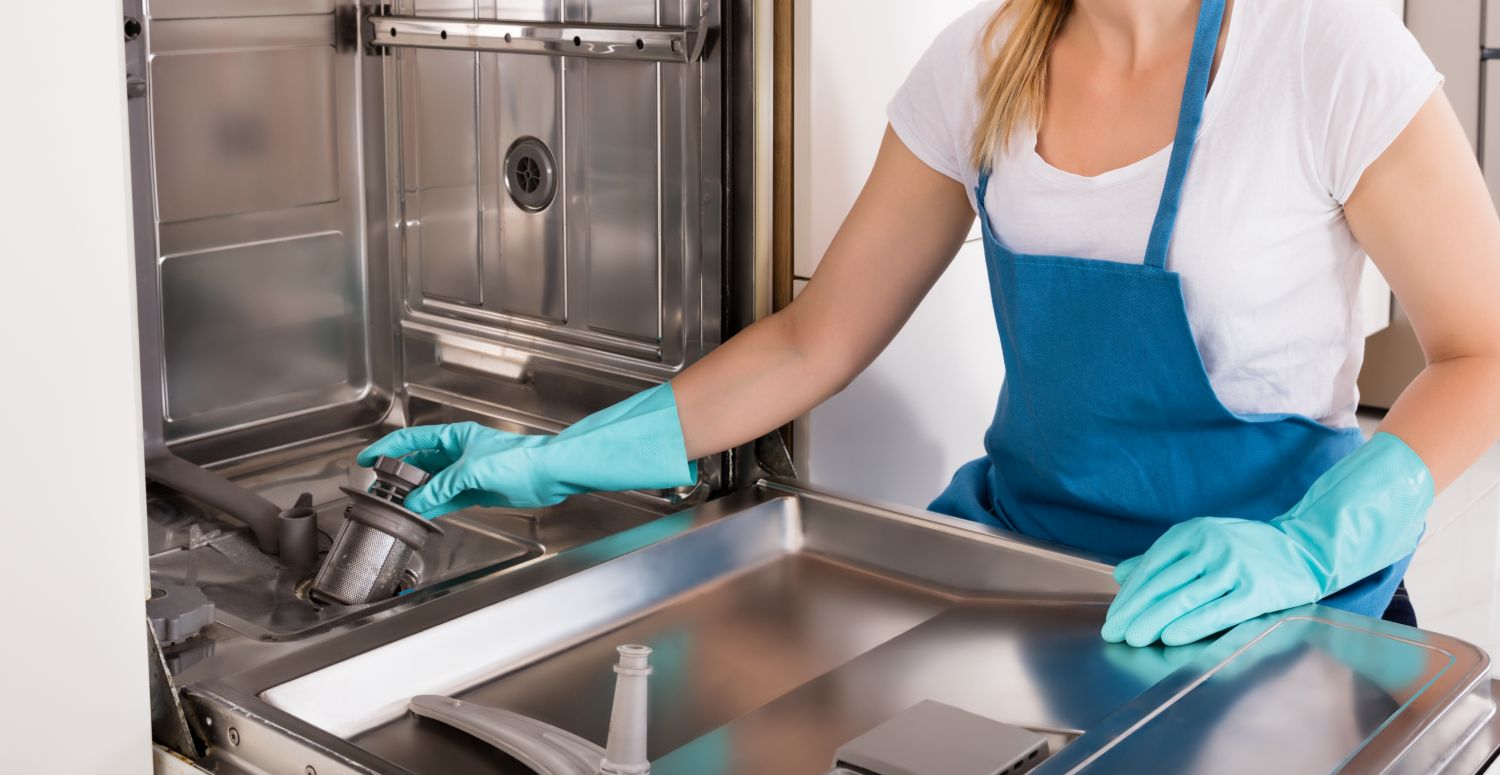

Kitchen Storage
16 Things You Never Knew You Could Clean In Your Dishwasher
Modified: February 9, 2024
Discover 16 surprising items you can effortlessly clean in your dishwasher. Explore genius kitchen storage ideas and maximize efficiency.
(Many of the links in this article redirect to a specific reviewed product. Your purchase of these products through affiliate links helps to generate commission for Storables.com, at no extra cost. Learn more)
Introduction
Keeping your kitchen organized and clutter-free is essential for creating a functional and efficient space. But finding the right storage solutions can be a challenge, especially when it comes to items that don’t fit neatly into cabinets or drawers. That’s where thinking outside the box – or in this case, outside the kitchen – can come in handy. Did you know that your dishwasher can be a secret weapon for more than just washing dishes? It turns out that there are many unexpected things you can clean in your dishwasher, saving you time and effort.
In this article, we will explore 16 things you never knew you could clean in your dishwasher. From everyday items like shoes and baseball caps to household tools and accessories, you’ll be amazed at the versatility of this appliance. So, let’s dive in and discover some creative ways to make the most of your dishwasher and keep your home clean and organized!
Key Takeaways:
- Discover the unexpected versatility of your dishwasher! From shoes to pet toys, unleash its cleaning power to save time and effort while maintaining cleanliness and functionality for a wide range of household items.
- Embrace the convenience of dishwasher cleaning for everyday items. Keep your kitchen and home organized with efficient, thorough cleans for shoes, kitchen tools, and more, saving time and effort in your daily routine.
Shoes
Cleaning shoes can often be a tedious and time-consuming task. But did you know that you can actually clean certain types of shoes in your dishwasher? Before you throw in your sneakers or canvas shoes, make sure they are machine washable. Remove any detachable parts, like shoelaces or insoles, and place the shoes securely in the top rack of your dishwasher. Avoid running the dishwasher with dishes or detergent, as this can damage the shoes. Use a gentle cycle with cold water to prevent any shrinkage or color fading. Once the cycle is complete, let the shoes air dry thoroughly before wearing them again. This method is not suitable for leather or suede shoes, which require specialized care.
Cleaning shoes in the dishwasher not only saves you time and effort but also helps eliminate odors and remove dirt in hard-to-reach areas. Just remember to check the manufacturer’s instructions or do a quick online search to ensure your shoes are dishwasher safe.
Additionally, you can also clean certain types of shoe accessories such as plastic flip-flops, rain boots, and even some types of sandals. However, always exercise caution and check for any specific cleaning recommendations from the manufacturer before attempting to clean them in the dishwasher.
So next time your shoes are in need of a deep clean, give the dishwasher a try! It’s a convenient and efficient way to revive your footwear and keep them looking fresh and odor-free.
Baseball Caps
Baseball caps are trendy accessories that often accumulate dirt, sweat, and grime over time. Cleaning them by hand can be a hassle, as it requires delicate scrubbing and air drying to maintain their shape. However, by utilizing your dishwasher, you can easily clean your baseball caps without the hassle.
Start by inspecting the cap for any detachable parts, such as fabric-covered buttons or logos. If possible, remove them to prevent damage during the cleaning process. Place the cap in the top rack of the dishwasher, ensuring it is secure and won’t be tossed around during the wash cycle. Opt for a gentle cycle with cold water to avoid any shrinkage or color fading.
To protect the cap’s structure, consider using a cap frame or a mesh laundry bag specifically designed for cleaning baseball caps. These accessories help keep the cap in shape and prevent it from getting misshapen during the wash cycle.
Avoid using dishwasher detergent, as it can be too harsh for the fabric of the cap. Instead, opt for a mild laundry detergent or a specialty cap cleaner. Place the detergent or cleaner in the dishwasher’s detergent dispenser, or you can add it to a small dish or laundry bag and place it on the top rack alongside the cap.
Once the cycle is complete, remove the cap from the dishwasher and reshape it if necessary. Carefully air dry the cap by placing it on a clean towel or a cap rack. Avoid using a clothes dryer or exposing it to direct sunlight, as this can cause shrinkage or damage the materials.
Cleaning your baseball caps in the dishwasher not only saves you time and effort but also helps maintain their shape and prolong their lifespan. Just make sure to double-check the cap’s cleaning instructions or consult the manufacturer’s recommendations before putting it in the dishwasher.
So, next time your favorite baseball cap needs a refresh, don’t hesitate to toss it in the dishwasher. It’s a convenient and effective method to keep your caps looking clean and presentable.
Pet Toys
Our furry friends bring us joy and companionship, but their toys can quickly accumulate dirt and bacteria. Keeping their toys clean is essential for their health and well-being. Instead of spending time washing them by hand, you can conveniently clean your pet’s toys in the dishwasher.
Before tossing the toys in the dishwasher, make sure to read the care instructions. Most hard plastic and rubber toys are dishwasher safe, but it’s always a good idea to double-check. Soft toys with delicate materials or built-in electronics should be hand washed to avoid any damage.
Place the dishwasher-safe pet toys securely in the top rack of the dishwasher, ensuring they won’t be tossed around during the wash cycle. Avoid using dishwasher detergent, as it can be too harsh for the toys. Instead, opt for a mild dishwashing liquid or even a natural cleaning solution. You can place the detergent in the dishwasher’s detergent dispenser or place a small amount directly on the toys.
Use a regular or gentle dishwasher cycle with cold or warm water, depending on the toy’s material. Avoid hot water, as it can cause some toys to melt or become misshapen. Once the cycle is complete, remove the toys from the dishwasher and give them a quick inspection. If they need further cleaning, you can scrub them with a soft brush or cloth before rinsing them thoroughly.
Allow the toys to air dry completely before giving them back to your pet. This will help prevent any mold or mildew from developing. If the toys have any squeakers or parts that can hold water, make sure to squeeze them out and let them dry completely as well.
Regularly cleaning your pet’s toys in the dishwasher not only prevents the spread of germs but also extends their lifespan. It ensures that your furry friend is playing with clean and safe toys, promoting their overall health and happiness.
Remember, every pet toy is different, so it’s crucial to check the manufacturer’s instructions or do a quick online search to determine if a particular toy is dishwasher safe. By doing so, you can keep your pet’s toys clean and enjoy some extra time with your beloved companion.
Shower Curtain Liners
Shower curtain liners are essential for protecting your bathroom from water damage and maintaining privacy while showering. Over time, these liners can accumulate soap scum, mildew, and hard water stains, making them look dirty and unappealing. Instead of replacing them every few months, you can clean shower curtain liners in your dishwasher.
Start by removing the shower curtain liner from the hooks or rings in your shower. Check the care label to ensure that it is dishwasher safe. Most vinyl or plastic shower curtain liners can be safely cleaned this way, but fabric or delicate liners should be hand washed to avoid damage.
Lay the shower curtain liner flat on the top rack of your dishwasher. If your dishwasher has an adjustable top rack, make sure to position it lower to accommodate the length of the liner. Avoid overcrowding the dishwasher to allow proper water circulation and cleaning.
For cleaning agents, you can use either vinegar or a mild detergent. If using vinegar, pour a cup of white vinegar into the dishwasher’s detergent dispenser or place a dishwasher-safe container filled with vinegar on the top rack alongside the liner. If using detergent, use a small amount and add it to the detergent dispenser or place it in a container on the top rack.
Choose a gentle wash cycle with warm water to effectively clean the liner without causing any damage. Avoid using hot water, as it can cause the liner to shrink or warp. Once the cycle is complete, carefully remove the liner from the dishwasher and hang it back in your shower to air dry.
Regularly cleaning your shower curtain liner in the dishwasher helps remove soap scum, mildew, and other buildup, extending its lifespan and keeping your bathroom looking fresh. It’s a cost-effective and time-saving solution compared to frequent replacements.
Remember, always check the care label and manufacturer’s instructions before cleaning your shower curtain liner in the dishwasher. This ensures that you can safely clean it without causing any damage and that it will continue to serve its purpose as a functional and attractive addition to your bathroom.
Makeup Brushes
Makeup brushes are essential tools for applying cosmetics, but they can easily accumulate product buildup, oils, and bacteria over time. Cleaning them regularly is crucial to maintain their performance and prevent any potential skin issues. While handwashing is the most common method, you can also clean your makeup brushes in the dishwasher for a more thorough and convenient cleanse.
Before placing your makeup brushes in the dishwasher, check their construction and materials. Brushes with natural bristles, such as those made from animal hair, may not be suitable for dishwasher cleaning and should be hand washed instead. Synthetic brushes, on the other hand, are generally safe for dishwasher cleaning.
To prepare your brushes for the dishwasher, remove excess makeup from them by gently tapping them against a clean tissue. Place the brushes securely in the utensil holder or a mesh laundry bag to prevent them from getting damaged or lost in the dishwasher. Avoid overcrowding the holder or bag to allow proper water circulation and cleaning.
Skip the use of dishwasher detergent, as it can be too harsh for the brushes and may cause damage. Instead, opt for a mild soap or baby shampoo. Add a small amount of soap to the dishwasher’s detergent dispenser or place it directly in the utensil holder or bag along with the brushes.
Choose a gentle wash cycle with cold or lukewarm water to prevent any damage to the brushes’ bristles. Avoid using hot water, as it can potentially loosen the bristles or cause them to fall out. Once the cycle is complete, remove the brushes from the dishwasher and gently reshape the bristles if needed.
To dry the brushes, lay them flat on a clean towel and let them air dry completely. Avoid using a blow dryer or placing them in direct sunlight, as this can damage the bristles and affect their overall quality.
Cleaning your makeup brushes in the dishwasher not only saves time but also provides a thorough and effective cleanse. Regularly cleaning your brushes in this manner helps remove stubborn makeup residue and bacteria, ensuring that your brushes remain hygienic and perform optimally. It’s important to note that delicate brushes or those with specialized materials may still require handwashing.
Remember, always check the manufacturer’s instructions or do some research to ensure that your makeup brushes are dishwasher safe. By doing so, you can keep your brushes clean and enjoy a flawless makeup application every time.
Kitchen Sponges
Kitchen sponges are used daily to clean dishes, countertops, and other surfaces in the kitchen. Over time, they can accumulate bacteria, food particles, and unpleasant odors. While replacing sponges regularly is important for maintaining cleanliness, you can also give them a thorough cleanse by running them through the dishwasher.
Before placing your kitchen sponges in the dishwasher, make sure they are free from any food debris. Rinse them thoroughly under running water to remove any remaining food particles. You can also soak them in a mixture of water and vinegar for about 5 minutes to help sanitize them.
Place the sponges securely in the utensil holder or on the top rack of your dishwasher. Using a utensil holder ensures that the sponges won’t fall or get lost during the wash cycle. If you have multiple sponges, avoid overcrowding them to allow proper water circulation and cleaning.
To effectively clean and sanitize the sponges, choose a high-temperature wash cycle with your dishwasher. The hot water and high-pressure jets will help eliminate bacteria and remove any odors. Avoid using dishwasher detergent, as it can be too harsh for the sponges. Instead, opt for a small amount of mild dish soap or add a cup of white vinegar to the dishwasher’s detergent dispenser.
Once the cycle is complete, remove the sponges from the dishwasher and give them a quick squeeze to remove any excess water. Allow them to air dry completely before using them again. To prevent the growth of bacteria, it’s essential to store the sponges in a clean and dry place between uses.
Regularly cleaning your kitchen sponges in the dishwasher not only extends their lifespan but also ensures that they remain sanitary and odor-free. It’s an efficient and convenient way to eliminate bacteria and keep your kitchen clean.
While using the dishwasher to clean your kitchen sponges is effective, it’s still recommended to replace them regularly – approximately every two to four weeks – to maintain proper hygiene. If the sponges begin to show signs of wear or emit a persistent odor, it’s time to replace them even sooner.
Remember, always check the manufacturer’s recommendations for sponge care and dishwasher compatibility. By following these guidelines, you can clean your kitchen sponges effectively and ensure a clean and healthy kitchen environment.
Dish Sponges
Dish sponges are our kitchen companions that help tackle grease and grime on our dishes. However, over time, they can become dirty and harbors bacteria, requiring regular cleaning. While handwashing your dish sponges can be effective, another option to consider is cleaning them in the dishwasher for a deeper and more thorough cleanse.
Before loading your dish sponges into the dishwasher, give them a quick rinse under running water to remove any loose debris or food particles. This step helps to ensure that your dishwasher remains clean during the wash cycle.
To prevent your sponges from moving around or getting tangled with other items in the dishwasher, place them in the utensil holder or secure them on the top rack. The utensil holder is an excellent option as it keeps your sponges in one place and allows the water and detergent to circulate around them evenly.
Avoid squeezing too many sponges into the utensil holder or overloading the dishwasher to maintain effective cleaning. Giving your sponges enough space will ensure that they come out fresh and thoroughly sanitized.
When it comes to detergent, it’s best to use the regular dishwasher detergent. The hot water and powerful jets in the dishwasher help break down grease and kill bacteria, leaving your sponges clean and ready for use.
Select a high-temperature wash cycle for your sponges. The heat will effectively sterilize the sponges and eliminate any bacteria lurking within. Avoid using a drying cycle, as dish sponges are typically made from porous materials that may not withstand the high heat.
Once the dishwasher cycle completes, remove the dish sponges and allow them to air dry completely before using them again. Place them in a well-ventilated area to ensure proper drying and minimize humidity, which can encourage bacterial growth.
Remember that dish sponges have a limited lifespan due to wear and tear. Regularly inspect your sponges and replace them as needed, even with proper cleaning. Also, be sure to follow any specific recommendations or instructions provided by the manufacturer for your dish sponges.
Cleaning your dish sponges in the dishwasher offers a convenient and efficient way to keep them clean and sanitized. By including them in your dishwasher routine, you can maintain a healthy and hygienic kitchen environment for all your dishwashing needs.
Fridge Shelves and Drawers
Keeping your refrigerator clean is essential for maintaining food safety and preventing odors. While wiping down the interior of your fridge is a regular cleaning task, you may overlook the shelves and drawers that can collect spills and sticky residue over time. Thankfully, your dishwasher can come to the rescue when it comes to cleaning fridge shelves and drawers.
Start by removing the shelves and drawers from your refrigerator. Check the manufacturer’s instructions to ensure that they are dishwasher safe. Most fridge shelves and drawers made of tempered glass or plastic are dishwasher safe, but delicate materials like wooden or metal components should be hand washed separately.
Before placing the shelves and drawers in the dishwasher, give them a quick pre-rinse to remove any loose food particles. This step helps prevent any food debris from clogging the dishwasher’s filter or spraying onto other dishes.
Place the shelves and drawers securely on the dishwasher racks, ensuring they won’t move or fall during the wash cycle. To prevent any scratches or rattling, it’s a good idea to load other dishes and utensils carefully around them.
For cleaning agents, opt for a mild dishwashing detergent, preferably one that is colorless and fragrance-free. Avoid using bleach or harsh chemicals, as they can damage the shelves and drawers or leave behind unwanted residues. You can add the detergent to the dishwasher’s detergent dispenser or directly place it on the shelves and drawers.
Choose a gentle or medium wash cycle with warm water. Avoid using hot water, as it may cause the shelves and drawers to warp or crack. Once the cycle is complete, carefully remove the shelves and drawers from the dishwasher and inspect them for any remaining grease or grime.
If needed, you can use a soft sponge or cloth to gently scrub away any stubborn stains or residue. Rinse them thoroughly with water to remove any soap residue before allowing them to air dry completely.
Once the shelves and drawers are dry, carefully place them back into your refrigerator. Take this opportunity to organize your fridge and ensure that everything is in its proper place. A clean and organized refrigerator not only helps keep your food fresh but also makes it easier to find what you need.
By utilizing your dishwasher to clean your fridge shelves and drawers, you can save time and ensure a thorough cleaning. Just remember to follow the manufacturer’s instructions and handle fragile materials with care to maintain the longevity of your refrigerator accessories.
You can clean plastic toys, toothbrush holders, and even baseball caps in your dishwasher. Just make sure to use a gentle cycle and skip the heated dry option.
Oven Knobs
Oven knobs are often overlooked when it comes to cleaning our kitchen appliances. However, they can accumulate grease, food splatters, and fingerprints over time. Cleaning oven knobs regularly not only keeps them looking pristine but also ensures their proper functionality. Luckily, you can easily clean oven knobs in your dishwasher.
Start by ensuring that your oven knobs are removable. Most oven knobs can be easily pulled off without the need for any tools. If you’re unsure, consult your oven’s manual or do a quick search online to confirm their removability.
Carefully remove the oven knobs from the appliance. Inspect each knob for any buildup or residue and wipe them down with a damp cloth to remove any loose debris. This step helps ensure that your dishwasher remains free from any excess dirt during the cleaning process.
Place the oven knobs securely in the utensil holder or on the top rack of your dishwasher. This ensures that they won’t get lost or damaged during the wash cycle. If you have multiple oven knobs, avoid overcrowding them to allow proper water circulation and cleaning.
Avoid using dishwasher detergent for cleaning oven knobs, as it can be too harsh. Instead, opt for a mild dish soap or a mixture of warm water and vinegar. Apply a small amount of soap or the water-vinegar mixture directly to a sponge or soft cloth and gently scrub the knobs to remove any grime or grease.
Choose a gentle wash cycle with warm water for cleaning the oven knobs. Avoid using hot water, as it may cause the knobs to warp or lose their shape. Once the dishwasher cycle is complete, remove the knobs and give them a quick inspection to ensure that they are clean.
Before reinstalling the oven knobs, make sure they are completely dry. Wipe them down with a clean, dry cloth if necessary. Carefully place the knobs back into their respective positions on the oven, ensuring they fit securely.
Cleaning your oven knobs in the dishwasher not only saves time and effort but also ensures a thorough and effective clean. Regularly cleaning the knobs helps prevent any buildup that can hinder their functionality and keeps them looking like new.
Remember to check the manufacturer’s instructions before cleaning your oven knobs in the dishwasher, as some knobs may not be dishwasher safe. By following these guidelines, you can keep your oven knobs clean and maintain a well-functioning kitchen appliance.
Plastic Toys
Children’s toys, particularly plastic ones, can quickly accumulate dirt, germs, and grime through regular play. Keeping these toys clean is important not just for hygiene but also for prolonging their lifespan. While handwashing is a common method, cleaning plastic toys in the dishwasher can be a convenient and effective solution.
Begin by inspecting the plastic toys to ensure they can be safely cleaned in the dishwasher. Most hard plastic toys, such as building blocks, action figures, and dolls, are dishwasher safe. However, toys that contain batteries, electronics, or delicate parts should be hand washed to avoid damage.
Give the toys a quick rinse or wipe with a damp cloth to remove any visible dirt or debris. This step helps prevent any loose dirt from clogging the dishwasher’s filtering system.
To prevent the toys from moving around or getting damaged during the wash cycle, place them securely in the utensil holder or on the top rack of your dishwasher. Consider grouping similar toys together to make retrieval and sorting easier once the cycle is complete.
Avoid using dishwasher detergent, as it can be too harsh for the plastic toys. Instead, opt for a mild dish soap or a baby bottle cleaner. You can apply a small amount of soap directly to a sponge or cloth and gently scrub the toys to remove any dirt or grime.
Choose a gentle wash cycle with warm water to effectively clean the plastic toys without risking any damage. Avoid using hot water, as this can cause the toys to warp or lose their shape.
Once the dishwasher cycle is complete, remove the plastic toys and give them a quick inspection to ensure they are clean. Rinse them under running water to remove any soap residue and allow them to air dry completely. Avoid using a hairdryer or exposing them to direct sunlight, as excessive heat can cause damage or fading.
Regularly cleaning plastic toys in the dishwasher not only helps ensure a safe and hygienic play environment but also extends their lifespan. It’s important to note that toys with intricate designs, stickers, or paint may require additional care and handwashing to preserve their appearance.
Remember to check the manufacturer’s instructions and recommendations before cleaning your plastic toys in the dishwasher. By following these guidelines, you can keep your child’s toys clean, sanitized, and ready for hours of safe play.
Toothbrush Holders
Toothbrush holders are essential for keeping our toothbrushes organized and off bathroom countertops. However, over time, they can accumulate toothpaste residue, soap scum, and bacteria. Regular cleaning of toothbrush holders is important for maintaining good oral hygiene. Fortunately, you can easily clean toothbrush holders in the dishwasher for a thorough and convenient cleanse.
Start by removing the toothbrushes from the holder and rinsing off any excess toothpaste or debris. This will prevent any loose particles from clogging the dishwasher’s filter or spray arms.
Inspect the toothbrush holder for any removable parts. If it has separate compartments or dividers, detach them if possible. Check the manufacturer’s instructions or do a quick online search to ensure that all parts of the toothbrush holder are dishwasher safe.
Place the toothbrush holder and its components securely on the top rack of your dishwasher. Avoid placing them on the bottom rack where they may be at risk of melting or becoming damaged from the dishwasher’s heating element.
Avoid using dishwasher detergent, as it can be too harsh for the toothbrush holder and may cause discoloration or damage. Instead, opt for a mild dish soap or a mixture of warm water and vinegar. Apply the soap or solution directly to a sponge or cloth and gently scrub the toothbrush holder to remove any buildup or stains.
Choose a gentle wash cycle with warm water for cleaning the toothbrush holder. Avoid using hot water, as it may cause the holder to warp or lose its shape. Once the dishwasher cycle is complete, carefully remove the holder from the dishwasher.
Thoroughly rinse off any residue or soap from the toothbrush holder under running water. Inspect the holder for cleanliness and wipe it dry with a clean cloth or allow it to air dry completely before reassembling and placing the toothbrushes back inside.
Regularly cleaning toothbrush holders in the dishwasher helps maintain a sanitary environment for your toothbrushes and promotes better oral hygiene. It is important, however, to periodically inspect the condition of the toothbrush holder and replace it if it becomes worn, cracked, or damaged.
Remember to check the manufacturer’s instructions or do research online to ensure that your toothbrush holder is dishwasher safe. By following these guidelines, you can keep your toothbrush holder clean and hygienic, ensuring a healthy dental routine for you and your family.
Hairbrushes and Combs
Hairbrushes and combs are essential tools in our daily hair care routine, but they can quickly accumulate oils, hair products, and residue over time. Regular cleaning of hairbrushes and combs is important not just for hygiene but also for maintaining healthy hair. While handwashing is a common method, cleaning them in the dishwasher can be a convenient and effective solution.
Start by removing any excess hair from the hairbrushes and combs. Use your fingers or a comb to loosen and remove the hair trapped in the bristles or teeth.
Fill up a sink or basin with warm water and add a small amount of mild dish soap or shampoo. Swirl the soapy water to create suds.
Submerge the hairbrushes and combs in the soapy water, bristle-side down. Allow them to soak for a few minutes to loosen any trapped debris or product buildup. Gently agitate the brushes and combs to release any additional residue.
Using an old toothbrush or a smaller clean brush, scrub the bristles or teeth of the hairbrushes and combs to remove any remaining dirt. Pay special attention to the base of the bristles or teeth where oils and residue can accumulate.
Once you’re satisfied with the cleaning, rinse the hairbrushes and combs thoroughly under running water to remove any soap residue. Ensure that all the soap is rinsed away to prevent it from transferring to your hair during future use.
Shake off any excess water from the hairbrushes and combs and blot them with a clean towel to remove most of the moisture.
Place the hairbrushes and combs on the top rack of the dishwasher, ensuring that they are secure and won’t move during the wash cycle. Avoid placing them on the bottom rack, where they may come into contact with the dishwasher’s heating element.
To prevent the hairbrushes and combs from getting damaged or tangled with other items, it’s best to place them inside a mesh laundry bag or a special brush cleaning tool designed for dishwashers.
Choose a gentle wash cycle with warm water for cleaning the hairbrushes and combs. Avoid using hot water, as it can cause damage to the bristles or teeth, especially if they are made of plastic or have delicate materials.
Once the dishwasher cycle is complete, remove the hairbrushes and combs and allow them to air dry completely before using them again. Place them on a clean towel or a drying rack with the bristles or teeth facing downwards to help gravity pull out any remaining water.
Regularly cleaning your hairbrushes and combs in the dishwasher helps remove dirt, oils, and product buildup, ensuring that they remain clean and effective tools for your hair care routine. Additionally, it’s important to replace hairbrushes and combs as needed, especially if they become worn out, have broken bristles, or are no longer effective.
Remember to check the manufacturer’s instructions or do some research to ensure that your hairbrushes and combs are dishwasher safe. By following these guidelines, you can keep your hairbrushes and combs clean and hygienic, promoting healthy hair and scalp.
Oven Mitts and Pot Holders
Oven mitts and pot holders are essential tools for safely handling hot cookware and bakeware. Over time, they can accumulate food stains, grease, and unpleasant odors. Cleaning oven mitts and pot holders is important not just for hygiene but also for maintaining their functionality. While handwashing is a common method, cleaning them in the dishwasher can provide a thorough and convenient solution.
Start by inspecting your oven mitts and pot holders to ensure they are machine washable. Most fabric and silicone oven mitts, as well as cloth pot holders, can be cleaned in the dishwasher. However, it’s important to check the manufacturer’s instructions or the care label to confirm their dishwasher compatibility.
Remove any food particles or debris from the oven mitts and pot holders before placing them in the dishwasher. This can be done by brushing or shaking off any loose residue, or by gently wiping them with a damp cloth.
Arrange the oven mitts and pot holders in the utensil holder or on the top rack of your dishwasher, ensuring they are spread out to allow proper cleaning. Avoid overstuffing the utensil holder or crowding the dishwasher to ensure that the water can reach all the surfaces during the wash cycle.
Avoid using dishwasher detergent on oven mitts and pot holders, as it can be too harsh and may leave behind residue. Instead, opt for a mild laundry detergent or soak them in a solution of warm water and gentle soap before placing them in the dishwasher.
Choose a gentle or delicate wash cycle with warm water for cleaning oven mitts and pot holders. Avoid using hot water or an intense cycle, as it may cause shrinkage, stretching, or damage to the fabric or silicone material.
Once the dishwasher cycle is complete, remove the oven mitts and pot holders and give them a quick inspection. If any stains or residue remain, you can spot clean them using a mild detergent or a stain remover designed for fabrics. Rinse them thoroughly with water to remove any soap residue before allowing them to air dry completely.
To maintain the longevity of your oven mitts and pot holders, it’s important to store them in a clean and dry place when not in use. Avoid placing them in areas where they can accumulate moisture or come into contact with grease or other contaminants.
Regularly cleaning your oven mitts and pot holders in the dishwasher helps remove stains, odors, and bacteria, ensuring that they remain clean and safe for use in the kitchen. However, it’s important to note that certain materials or special features, such as built-in insulation or non-removable components, may require handwashing or alternative cleaning methods.
Remember to always check the manufacturer’s instructions or care labels before cleaning your oven mitts and pot holders in the dishwasher. By following these guidelines, you can maintain clean and functional kitchen accessories for safe and enjoyable cooking experiences.
Kitchen Tools (without Wooden or Plastic Handles)
In a busy kitchen, our utensils and tools can accumulate food particles, grease, and stains over time. While handwashing is the most common method for cleaning kitchen tools, cleaning them in the dishwasher can be a convenient and effective alternative. However, it’s important to note that only certain kitchen tools without wooden or plastic handles are dishwasher safe.
Before placing any kitchen tools in the dishwasher, check the manufacturer’s instructions or the care label to confirm their dishwasher compatibility. Most stainless steel, metal, or silicone kitchen tools are safe to clean in the dishwasher, but wooden handles or plastic components may not withstand the high heat or harsh detergents.
Start by removing any food debris or residue from the kitchen tools. Rinse them under running water or use a brush or sponge to gently scrub off any remaining particles.
Arrange the kitchen tools securely in the utensil holder or on the top rack of your dishwasher. Avoid overcrowding the utensil holder or the dishwasher to ensure proper water circulation and cleaning.
Avoid using dishwasher detergent on kitchen tools, as it can be abrasive or corrosive to certain materials. Instead, use a mild dish soap or a specialized utensil cleaner. You can apply the soap or cleaner directly to a cloth or sponge and gently scrub the kitchen tools.
Choose a gentle or delicate wash cycle with warm water for cleaning the kitchen tools. Avoid using hot water or intense cycles, as this may cause damage or discoloration to the tools.
Once the dishwasher cycle is complete, remove the kitchen tools and inspect them for cleanliness. If any residue remains, you can use a brush or sponge to give them a final scrub. Rinse the tools thoroughly with water to remove any soap residue before drying.
Allow the kitchen tools to air dry completely before using or storing them. Placing them on a drying rack or wiping them dry with a clean towel can help speed up the drying process.
Cleaning kitchen tools in the dishwasher can save time and effort in maintaining a clean and organized kitchen. However, always refer to the manufacturer’s instructions or care labels before cleaning them in the dishwasher to ensure their longevity and optimal performance.
Remember that kitchen tools with wooden or plastic handles, as well as those with intricate designs or delicate materials, may require handwashing or alternative cleaning methods. By following the proper cleaning guidelines, you can keep your kitchen tools in top condition for efficient and enjoyable cooking experiences.
Silicone Baking Mats
Silicone baking mats are a kitchen staple for avid bakers. They provide a non-stick surface that makes baking and cleanup a breeze. Over time, these mats can accumulate oils, food residue, and stains. While handwashing is the usual method for cleaning them, you can also clean silicone baking mats in the dishwasher for a thorough and convenient cleanse.
Start by removing any loose crumbs or debris from the silicone baking mats. Gently shake or wipe them to remove any loose particles before placing them in the dishwasher.
Arrange the silicone baking mats securely on the top rack of your dishwasher. Avoid placing them on the bottom rack or near the heating element, as this can damage the mats.
Avoid using harsh dishwashing detergents, as they can potentially damage the silicone material. Instead, opt for a mild dish soap or a specialized silicone mat cleaner. Apply a small amount of soap or cleaner directly to the baking mats or use a sponge or soft brush to gently scrub them.
Choose a gentle or delicate wash cycle with warm water for cleaning the silicone baking mats. This helps prevent any warping or damage to the mats during the dishwasher cycle.
Once the dishwasher cycle is complete, carefully remove the silicone baking mats and inspect them for any remaining stains or residue. If necessary, you can use a sponge or cloth to spot clean any stubborn areas.
Rinse off any soap residue from the baking mats under running water. Ensure that all the soap is rinsed away to prevent any unwanted flavors or odors in your future baking.
Allow the silicone baking mats to air dry completely before storing them. You can place them on a clean towel or a dish rack to expedite the drying process.
Cleaning silicone baking mats in the dishwasher not only saves time but also ensures a thorough and hygienic clean. Regular cleaning of baking mats helps maintain their non-stick properties and extends their lifespan.
Remember to check the manufacturer’s instructions or care label for any specific recommendations. It’s important to note that certain silicone baking mats may not be dishwasher safe or may have temperature limitations.
By following the proper cleaning guidelines, you can keep your silicone baking mats clean and ready for your next baking adventure, making delicious treats without the worry of sticking or difficult cleanup.
Glass Light Fixtures
Glass light fixtures are a beautiful addition to any home, providing a warm and inviting ambiance. Over time, however, dust, dirt, and grime can accumulate on the glass, dulling its sparkle and reducing the amount of light it emits. Cleaning glass light fixtures is essential for maintaining their beauty and ensuring optimal lighting. While handwashing is a common method, cleaning them in the dishwasher can be a convenient and effective option.
Before proceeding with cleaning, make sure that the glass light fixtures are removable and dishwasher safe. Most high-quality glass fixtures can be safely cleaned in the dishwasher, but it’s always best to check the manufacturer’s instructions or consult a professional if you’re unsure.
Carefully remove the glass light fixtures from their mounting or fixtures. If necessary, refer to the manufacturer’s instructions or consult a professional to ensure a safe removal process.
Inspect the glass fixtures for any loose or fragile components. If possible, detach any removable parts, such as decorative elements or metal hardware, to clean them separately. You can handwash these parts using mild dish soap and warm water.
Place the glass light fixtures securely in the dishwasher, ensuring they are arranged in a way that prevents them from banging against each other or other items during the wash cycle. For added protection, you can wrap them in a mesh laundry bag or use a dishwasher-safe plastic container designed for delicate items.
Avoid using dishwasher detergent on glass light fixtures, as it may contain harsh chemicals that could damage the glass or any decorative elements. Instead, use a mixture of warm water and mild dish soap. Apply the soapy solution using a soft sponge or cloth, gently wiping the glass to remove any dirt or grime.
Choose a gentle wash cycle with cold or warm water to clean the glass light fixtures. Avoid using hot water, as extreme temperature changes could cause the glass to crack or shatter. Once the dishwasher cycle is complete, remove the glass fixtures and inspect them for cleanliness.
Rinse the glass light fixtures with clean water to remove any soap residue. Use a microfiber cloth to gently dry them, ensuring that no streaks or water spots remain. Avoid using paper towels or abrasive materials that could scratch the glass surface.
Allow the glass light fixtures to air dry completely before reassembling them or reinstalling them. Make sure the fixtures are completely dry to prevent any moisture buildup or potential damage when they are powered on.
Cleaning glass light fixtures in the dishwasher is a time-saving and effective method for maintaining their cleanliness and clarity. However, it’s important to note that delicate or antique glass fixtures may require handwashing or professional cleaning to avoid any damage.
Remember to always refer to the manufacturer’s instructions or consult a professional when cleaning glass light fixtures. With proper care and cleaning, your glass light fixtures will continue to enhance the beauty of your space and provide a welcoming glow for years to come.
Conclusion
In conclusion, the dishwasher can be a versatile tool for more than just washing dishes. By utilizing this appliance, you can clean a variety of items in a convenient and efficient manner. From shoes and baseball caps to pet toys and makeup brushes, the dishwasher offers a unique cleaning solution for items that may not fit into traditional cleaning methods.
Cleaning these items in the dishwasher not only saves time and effort but also helps maintain their cleanliness, functionality, and longevity. The high temperature and powerful jets of water in the dishwasher effectively remove dirt, grime, and bacteria, leaving the items sanitized and ready for use.
However, it’s important to note that not all items are suitable for dishwasher cleaning. Always check the manufacturer’s instructions or do some research to ensure that the items are dishwasher safe and won’t be damaged during the cleaning process. Additionally, delicate or valuable items may require alternative cleaning methods to preserve their quality.
Regular maintenance and cleaning of everyday items like kitchen sponges, oven mitts, and toothbrush holders are essential for hygiene and functionality. By incorporating them into your dishwasher cleaning routine, you can efficiently keep your kitchen and bathroom clean and organized.
Remember to always follow proper procedures, such as rinsing off loose debris, using mild detergents, selecting appropriate wash cycles, and allowing items to air dry afterward. This will ensure that the items come out of the dishwasher clean, undamaged, and ready for their intended use.
Incorporating the dishwasher into your cleaning routine can provide a time-saving and effective solution for tackling various household items. While it may not be suitable for everything, it offers a valuable option for items that can benefit from a thorough and convenient cleanse.
So, the next time you’re looking for a way to clean your shoes, kitchen tools, or even glass light fixtures, consider giving the dishwasher a try. You might be surprised at its versatility and the fresh, clean results it can provide.
Frequently Asked Questions about 16 Things You Never Knew You Could Clean In Your Dishwasher
Was this page helpful?
At Storables.com, we guarantee accurate and reliable information. Our content, validated by Expert Board Contributors, is crafted following stringent Editorial Policies. We're committed to providing you with well-researched, expert-backed insights for all your informational needs.
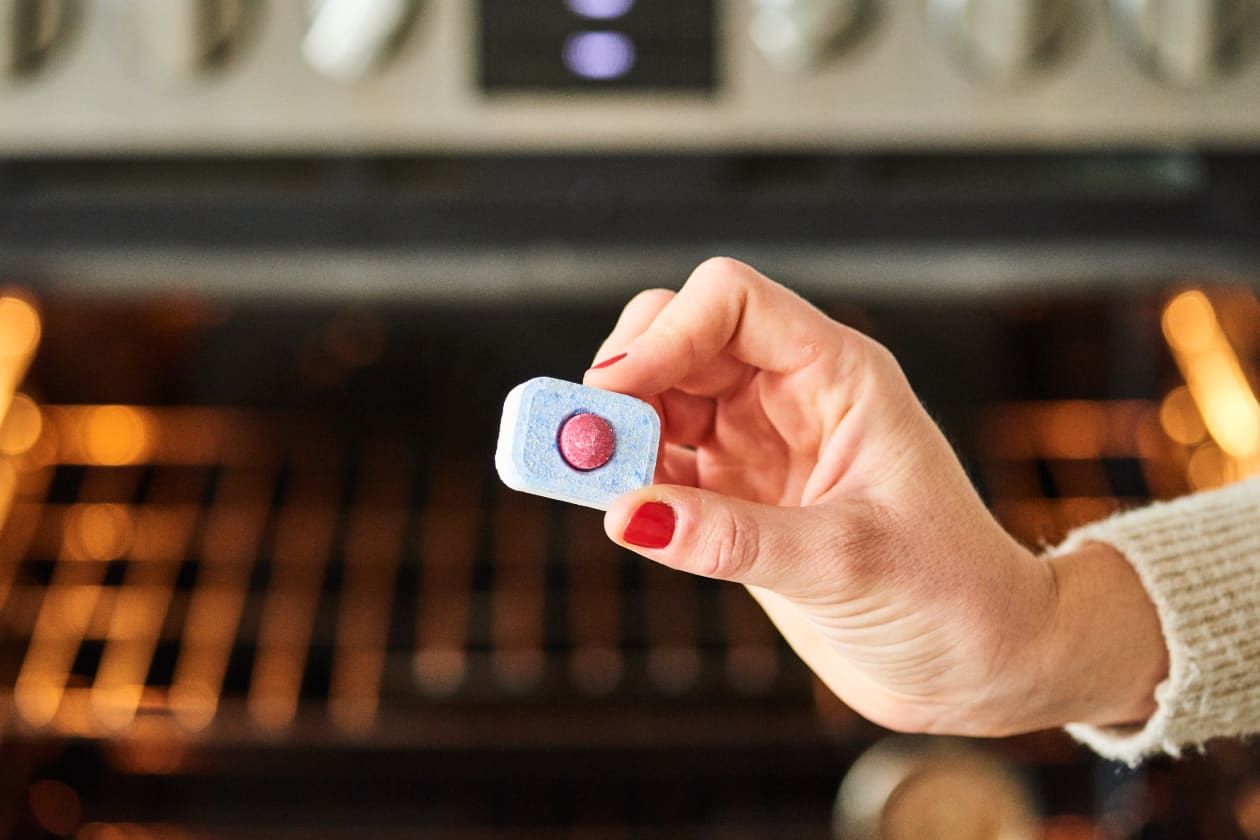
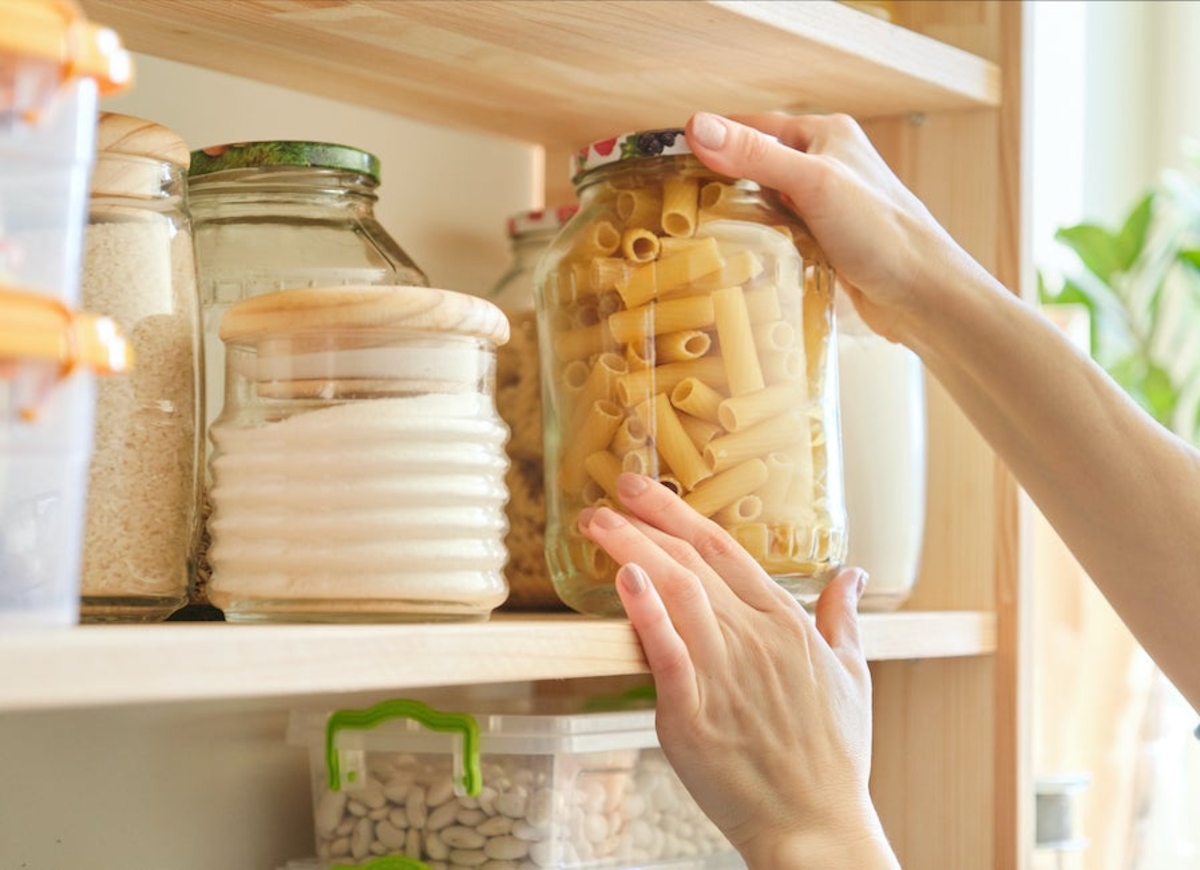


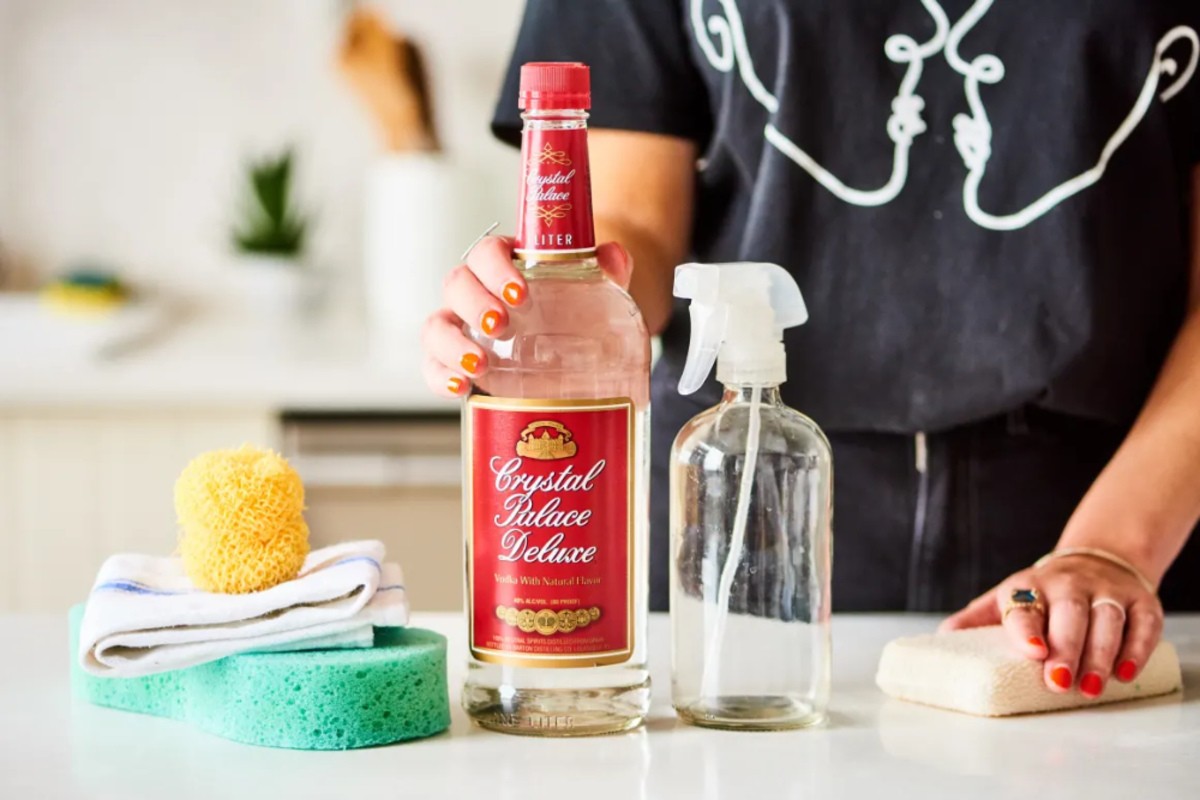
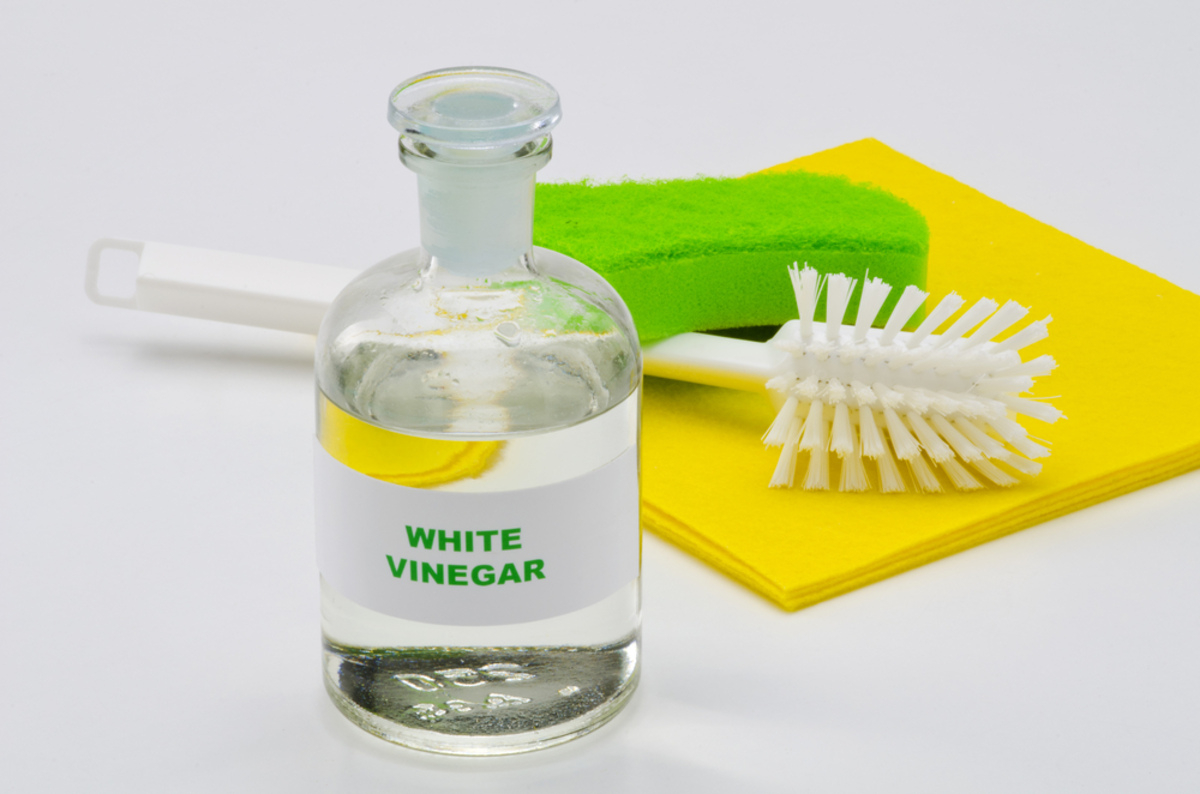
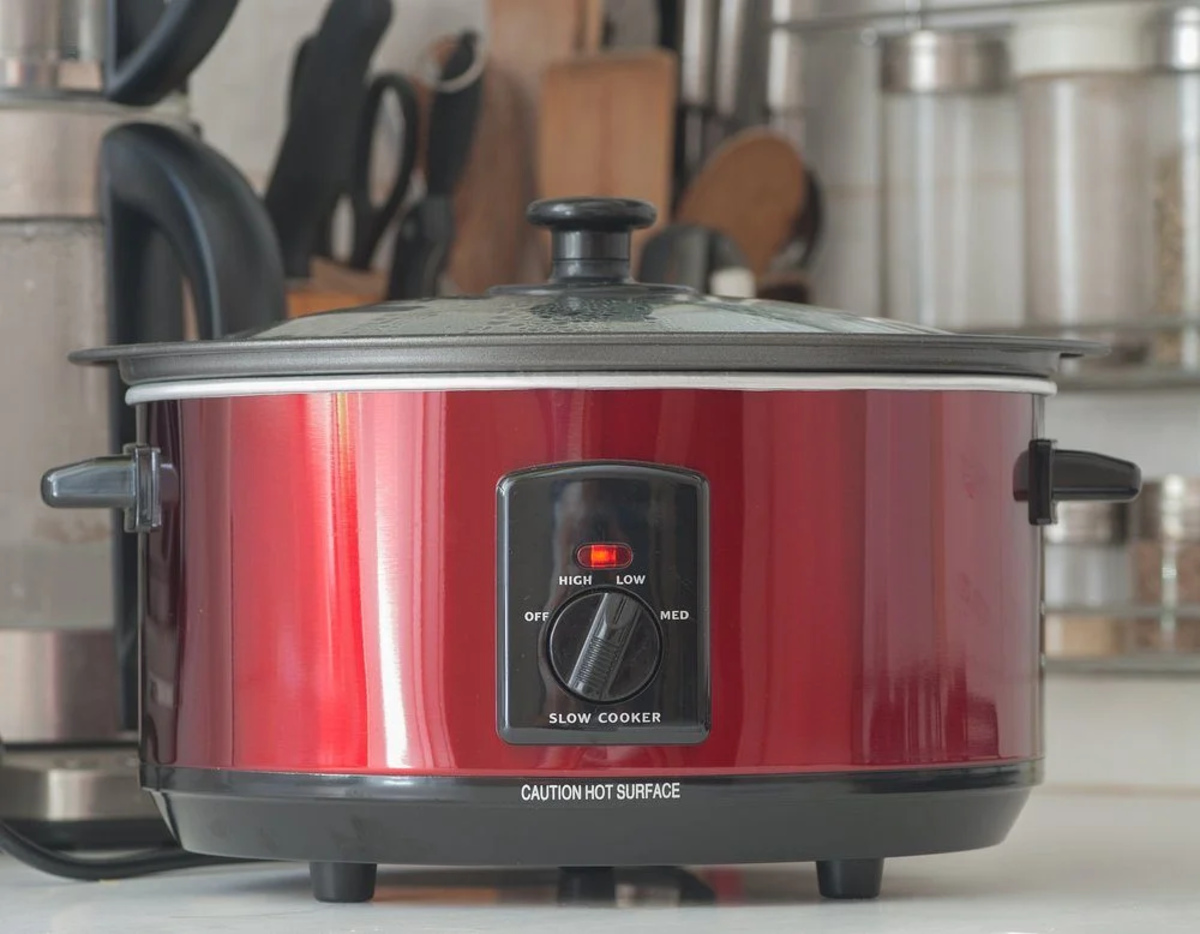


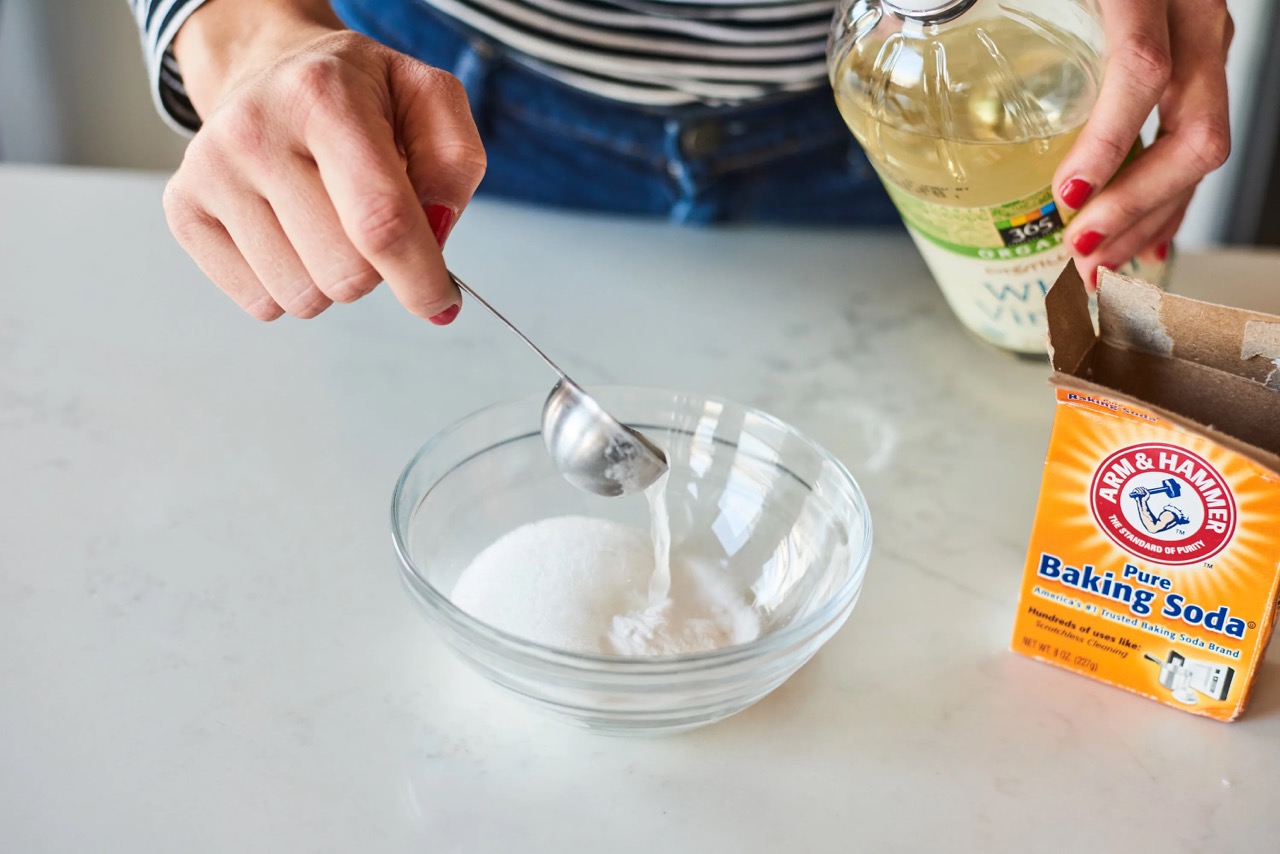


0 thoughts on “16 Things You Never Knew You Could Clean In Your Dishwasher”